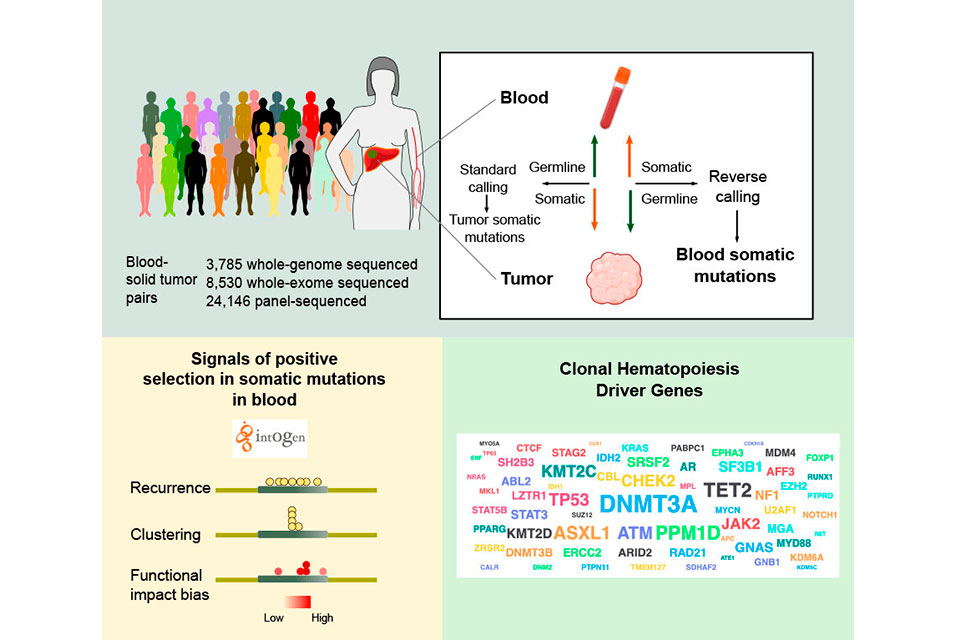AUGUSTA, GA.- Disease of the microscopic blood vessels that feed the white matter of our brain is associated with worse cognitive function and memory deficits in individuals with Alzheimer's, scientists report.
"The main message of this paper is the mixed pathology as we call it—microvascular disease and Alzheimer's—is associated with more brain damage, more white matter damage and more inflammation," says Dr. Zsolt Bagi, vascular biologist in the Department of Physiology at the
Medical College of Georgia at Augusta University.
Theirs and other recent findings suggest that some people with Alzheimer's who have brain changes widely associated with the condition, like amyloid plaques, may not develop dementia without this underlying vascular dysfunction, the researchers write in the journal GeroScience.
"We are proposing that if you prevent development of the microvascular component, you may at least add several years of more normal functioning to individuals with Alzheimer's," Bagi says.
He and by Dr. Stephen Back, pediatric neurologist, Clyde and Elda Munson Professor of Pediatric Research and an expert in white matter injury and repair in the developing and adult brain at Oregon Health & Science University, are co-corresponding authors of the new study.
The good news is that vascular disease is potentially modifiable, Bagi says, by reducing major contributors like hypertension, obesity, diabetes and inactivity.
The scientists looked at the brains of 28 individuals who participated in the Adult Changes in Thought Study, or ACT, a joint initiative of Kaiser Permanente Washington Research Institute and the University of Washington, whose scientists also were collaborators on the new study.
ACT is a longitudinal study of the cognitive health of community volunteers from the Seattle, Washington area with the goal of finding ways to delay or prevent memory decline. Participants age 65 or older with no cognitive problems upon enrollment are followed until their death, and about 25% agree to autopsy and making genomic DNA from their blood and/or brain tissue available to scientists.
The individuals that served as controls for the study had no indication of Alzheimer's or vascular disease in their brain. Other groups had Alzheimer's without vascular disease, vascular disease without indicators of Alzheimer's or both Alzheimer's and vascular disease.
Their focus in the studies was the white matter, which accounts for about 50% of the brain mass, enables different regions of the brain to communicate and is packed with long arms called axons that connect neurons to each other and to other cells across the body like muscle cells; and, the microscopic arterioles that directly feed white matter with blood, oxygen and nutrients.
They wanted to test their theory that when these hair-thin arterioles had difficulty dilating and so supporting this part of the brain, it resulted in changes to the white matter that were evident on sophisticated MRIs, especially when microvascular problems coexisted with the more classic brain changes of Alzheimer's.
They found that the arterioles of those who had been diagnosed with Alzheimer's and dysfunction of these tiny arteries did have an impaired ability to dilate in response to the powerful blood vessel dilator bradykinin, compared to those without obvious microvascular dysfunction. Problems with dilation were associated with white matter injury and changes to the white matter structure that were visible on MRI.
Expression of the precursor for the also-powerful blood vessel dilator nitric oxide also was reduced in these individuals with both conditions while the expression of superoxide generating NOX1, which damages blood vessels, was increased.
Arteriole dysfunction also was associated with more white matter injury based on what was visible on those sophisticated MRI scans and the increased number of brain cells, called astrocytes, which support neurons.
The investigators had previously reported an increase in these astrocytes in brains with the microvascular changes. This time they saw that when Alzheimer's and the microvascular changes were both present, the astrocytes became more reactive, inflammatory and damaging.
Colleagues at Oregon Health & Science University, led by Back, looked at the same brain tissue with a sophisticated MRI technique called diffusion tensor imaging, that uses water diffusion between cells to look at the microstructure of white matter and its connectivity.
They could not visualize individual arterioles because they are too small—about 30 microns or .0011811 inches—to see without a microscope. But they could see the white matter damage that resulted from arteriole disease, and again found the correlation between the vascular impairment and tissue damage that Bagi described from directly visualizing the tissue. This type of blood vessel disease was present in 50% of the brains they studied, and other autopsy studies have indicated a similarly high rate.
In those with less indicators of brain changes, they found the arterioles were better able to dilate, that area of the brain had better connectivity and less damage apparent on the postmortem MRI.
Impaired ability of these small vessels in the white matter to dilate is known to be associated with white matter injury, like that visible on the specialized MRI scans. And there is evidence in both laboratory studies and humans that this vascular dysfunction does not just worsen but plays a role in the development of cognitive decline and dementia in people with Alzheimer's, the investigators write.
In fact, the vascular dysfunction may be present before the damage to the brain tissue and cognitive dysfunction is apparent. In research animals bred to develop Alzheimer's, for example, there is evidence of problems with the microvasculature in areas of the brain associated with Alzheimer's, like the hippocampus, a center of learning and memory, at a very young age.
The new work confirms the growing concept that small blood vessel disease may help predict the severity of dementia and/or use of DTI MRI may help identify those patients with early enough disease that strategies to reduce or slow small blood vessel disease may help delay or reduce their cognitive loss. The technique might also help assess the potential benefit of intervention.
"These individuals might especially benefit if they would exercise, control blood sugar level and control their blood pressure," Bagi says.
Some patients with Alzheimer's disease are known to have white matter hyperintensities on MRI scan, basically damaged areas that show up particularly bright on the scan and are associated with problems like dementia. A significant proportion of individuals with Alzheimer's also have conditions like high lipid levels in their blood and hypertension that are known to impair blood vessel function, including the smallest vasculature, Bagi notes. Small blood vessel disease in the brain also is common in aging and may indicate an increased risk of problems like stroke or dementia. Sophisticated brain scans also often indicate microinfarcts, essentially microscopic strokes, which also tend to increase with age and are associated with memory impairment.
Age and a family history are major risk factor for Alzheimer's and there are two categories of genes associated with an increased risk, including risk genes, like APOE-e4, the first gene identified and the one that has the strongest impact on risk, according to the Alzheimer's Organization. Then there are those genes that can directly cause Alzheimer's, called deterministic genes, which impact production or processing of beta-amyloid, the main component of the plaque associated with Alzheimer's, but even having these rare genes are not a guarantee of disease.
"You have some genetic predisposition but people realize that not everybody develops memory decline or cognitive deficits unless something else is coming in," Bagi says. He notes that they have not yet analyzed the genes for this study.
Next steps include studying the associations they found in more human brains and more studies to better understand exactly how the small blood vessel disease happens, which could point toward new targets to intervene.










